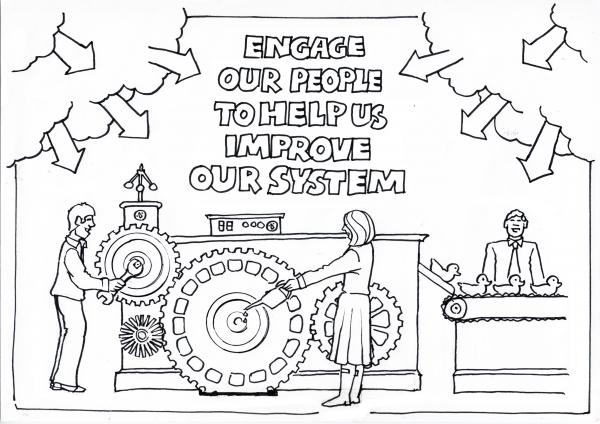Tools to make you THINK differently about your business
In the last blog, we looked at some of the research that has been undertaken on learning and motivation. What I’d now like to explore is the practical application of this and how it can be used in anger. The application we’ll be looking at is in making recruitment decisions, however the approach and the questions asked are relevant to a raft of people interactions, for instance:
- Sales visits
- Board meetings
- Disciplinary meetings
- Training evaluation meeting
- The list is long…
We all have “preferences” which reflect how we learn and act, as such, with careful questioning these preferences can be identified so that we can communicate with people better…We can’t change other people but we can change how we interact with them.
These tools help you map your beliefs, your values, and your mental strategies and once you understand your own it will allow you to communicate far more effectively with others using their preferences as well as your own.
Some years ago, a guy called Dr Roger Bailey came up with a set of a dozen or so motivation questions which can be used to elicit someone’s motivation “profile”. To my mind, the current world No1 exponent of these techniques is a great little Canadian lady called Shelle Rose Charvet and a few of the components of the model seek to elicit your preferences; for instance are you motivated:
- toward a goal or away from something?
- internally or externally?
- by big picture thinking or detail thinking?
For each dimension or component of the model there is a question the first of which seeks to establish what is important about a particular subject.
Interestingly, and perhaps even oddly initially, you are often not actually looking for the answer ‘per se’ you are looking for the words the respondent uses that accompany the answer! Let’s take a look at a few examples…
Towards or away from motivation
In order to establish whether, in relation to the subject, (e.g. work, holiday, car, relationship etc) someone is motivated toward or away from it, the question to ask is:
- What’s important to you in a (subject)? (e.g. work, holiday, car, relationship etc)
- Toward motivation people are likely to use words like; gain, attain, get and archive
- Away from motivation people are likely to use words like; avoid, exclude, evade, skirt
Internal or external motivation
If you are looking to establish if someone is internally or externally motivated, as understanding this will have a massive effect how you best manage them, ask the question:
- How do you know you have done a good job?
Internally motivated people will give an answer which indicates they know within themselves responding with answers like “I just know” or “my standards have always been higher than others”.
Whereas, externally motivated people will say things like “my boss or my customers tell me”, or “my findings were published in this or that report”. These things are “external” to them. People with an external frame of reference will want much more stroking than internally referenced people.
Also, if you tell an internally referenced person that they have done a good job and they “know” it is not up to their usual standard; they will think ill of you!
Big picture or detail motivation
The question to ask to establish orientation is:
- If we were to do a project together would you like to know the big picture first or the detail?
People will usually just give you a short answer, however, it is often useful to ask a supplementary / opposite question:
- If the answer was big picture – Would you need to know the detail?
- If the answer was detail – Would you need to know the big picture?
Knowing the answer to this question allows you to know exactly how to present information to people; if they are a big picture person do not present them with lots of detail!
For each of the motivation profiles there is a particular question, more of which can be found on the download below, or the complete set can be found on Shelle’s website www.successtrategies.com or indeed in her great book “Words that Change Minds”.
Motivation profiles used in anger
So, with one of our clients looking to recruit a new tranche of telemarketing people what we did was select half a dozen of the more established (and successful) existing people and interviewed them using Shelle’s questions to develop a common motivation profile. We were engaging our people to help us improve our systems!

Understanding the motivation profile of the best people, all potential candidates were interviewed against this to ensure a motivation profile match before they were then assessed as to their competency.
The benefits to the company in hiring people with the right motivation profile were; the company:
- Short circuited the recruitment process
- Significantly reduced staff turnover
- Significantly increased productivity during the probation period
Related tools and ideas
- Neuro Linguistic Programming
- VAK – visual, auditory, kinesthetic learning styles
Recommended references
- Words that Change Minds Shelle Rose Charvet
- Dragon Slaying: a better way to manage by Mark Woods; email mwoods@statius.co.uk to receive your free copy
Downloadable resources
To find out how Statius can help you deliver:
• Better strategies
• Better systems
• Better measurement and
• Engaged people delivering
• Better results
Call us now on 0208 460 3345 or email sales@statius.co.uk


Comments are closed